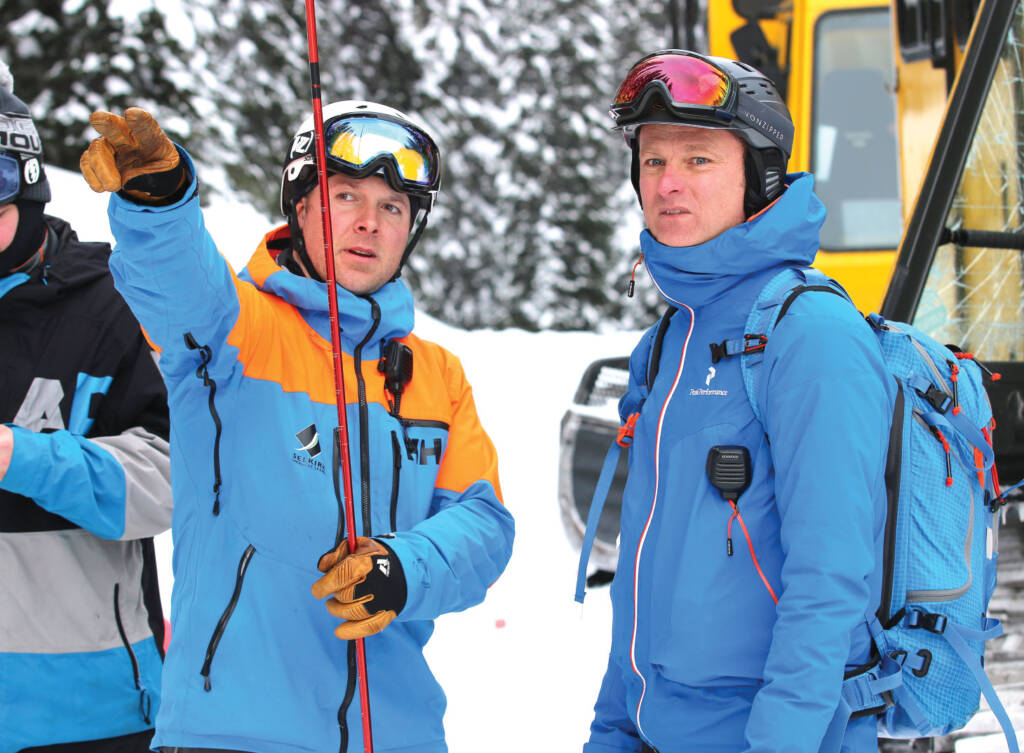It started in 1995 with a bit of a conundrum. The students in the Ski Resort Operations and Management Program (SROAM) at Selkirk College in Nelson, B.C., were typical 20-somethings – working to develop a career by adding education to their entry level ski industry experience – and Selkirk wanted to find a way to connect with industry professionals.
The powers that be at the time thought they should offer an online course, but didn’t know what they should teach. To figure it out, they reached out to several of their alumni, including Bob Dodge.
Dodge had graduated from two-year diploma program several years before and was working as a human resources (HR) and safety and security manager at Cypress Mountain in Vancouver. He had kept in touch with the people who ran the program and considered them friends, so he was more than happy to weigh-in on their question.
“My personal thought was risk management was the number one need. It’s what I would’ve wanted, as an HR manager and risk manager, our employees, particularly supervisory level employees, to take. I thought it was a course that would be valuable and one the ski industry could support,” said Dodge.
At the time, insurance rates at ski resorts were going up, thanks largely to increasing liability, as terrain parks for freestyle skiing and snowboarding were becoming more popular and underwriters became more concerned about the risk of injury.
Risk management was still seen as the subject with the most potential, so Dodge was given release time from teaching in the classroom to develop the online course.
“A lot of managers and supervisors in the industry did not have a real understanding of risk management and didn’t really understand the implications of proper signage, proper training and proper documentation of training. They didn’t know how important a waiver is for protecting yourself if somebody is injured and trying to sue,” said Dodge.
“Risk management is one of those things where all it takes is one little accident, one person not paying attention to the details, and next thing you know, you have a costly lawsuit on your hands and your insurance rates go up.”
Fast forward to 2007, and Dodge had left his job at Cypress after 10 years and was now teaching risk management as an instructor at Selkirk College, and the idea of offering an online course to ski industry professionals came up again.
“Risk management was thought to be an area where there was certainly a gap of knowledge – a gap that could be easily closed with one course,” said Dodge. The college agreed. Risk management was still seen as the subject with the most potential, so Dodge was given release time from teaching in the classroom to develop the online course.

The rest, as they say, is history.
The course has been running since 2007, with several notable alumni having taken it, including the ski patrol and risk management and safety managers of several popular resorts, including Whistler-Blackcomb, Mount Washington Alpine Resort, Sun Peaks Resort and SilverStar Mountain Resort.
With a cost of C$580, which is usually covered by the student’s employer, the 12-week program typically sees eight to 16 students enrolled and begins at the end of January every year. The online program can be accessed by registered students on their own timeline, allowing them to continue working in the ski industry.
The assignments are meant to foster discussion among the students and it’s those discussions that make the course standout.
“We create a very safe environment for people to share information in a confidential way within the course. Everyone has their own challenges within the industry and sometimes people really appreciate the opportunity to share those,” said Martin Keyserlingk, chair of Selkirk’s School of Hospitality and Tourism, which oversees SROAM.
“A lift mechanic may share thoughts and concerns about what’s going on in their resort and it’s wonderful to see people from the industry helping each other out, all focused around risk management.”
For Keyserlingk and Dodge, this meeting of the minds working through practical and modern applications of risk management theory is why taking the course adds value over learning about risk management through on-the-job training.
“The connections that people make in specific areas mean they will be reaching out to one another. You can, but you will not be as successful if you work in a silo. Everybody is always reaching out. I see that all the time and that’s what draws me to the industry, those human connections that we all have,” said Keyserlingk.

“This course is a wonderful example of that because our students are often in high stress positions and when they can come in, talk, debrief and realize they’re not alone in the industry, they continue those relationships with the people they met in the course. Suddenly, they know there are other people in the industry, in their same position, and they can start to dig around and reach out to those people.”
However, the course wasn’t so easy for Dodge to put together. In the early aughts, online learning was new and very few people at Selkirk College had a background in it.
“There was a lot of figuring it out on my own – that’s for sure,” said Dodge. “The content of risk identification, risk evaluation and risk financing were all there, but I had to figure out how to deliver this content to people working in ski areas.”
He didn’t have the same access to his students for this course as he would in the classroom, which led to the discussion forums. Each week Dodge would post a couple of questions for students to comment on. Students would first comment on the question before looking at what their classmates had to say. Then they would discuss it.
“All of these people had experience and a huge variety of experiences. It was always a really diverse group of people, but they all had their own opinions on things and their own questions, so the discussions were actually quite lively and productive,” said Dodge.
Even Dodge found himself learning a lot as time went on. He had a strong background in risk management, but he had to walk a fine line as the course instructor not to tell people how to manage risk.

“I focused a lot on the risk management process, so in those discussion forums there wasn’t a right or wrong answer, but people got very engaged. A lot of the learning happened there,” said Dodge.
The assignments were structured in such a way that the students worked through creating a risk management plan for the department they worked in. They would identify what risks were issues where they worked, and then through risk evaluation, determine which risks were most likely to cause the greatest losses. They would then create plans for mitigating those risks and look at the administration of their risk management program, and the factors that would help or hinder the success of their risk management program.
“The students end up with a fairly comprehensive plan for their own risk management within their department,” said Dodge.
He delivered his content by converting his classroom lectures into PowerPoint presentations with voice-over that the students were required to watch before answering the discussion questions or doing that week’s reading. All content was posted on an online-learning platform called Moodle.
Now Dodge is retired after teaching the course for about eight years, but he appreciates his legacy looking back and is confident the course is in good hands with new instructor CJ Matthews-Dickson, as the SROAM program just finished celebrating its 40th anniversary.
“I was extremely proud after creating it and teaching it for a while. [Matthews-Dickson] was a student of mine in the full-time program, and I think this is her third year teaching the risk management course. She’s the second person since me to teach it and she’s got some great background in risk management, so I was quite pleased when she was chosen to teach it.”


